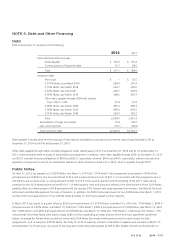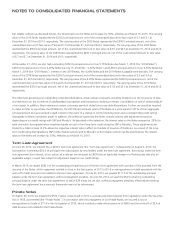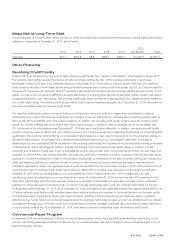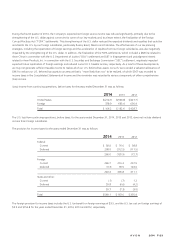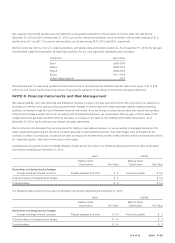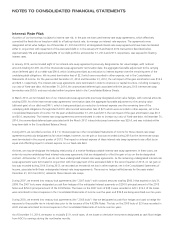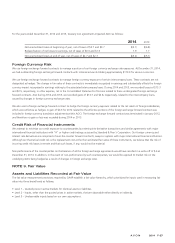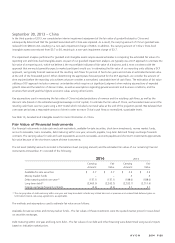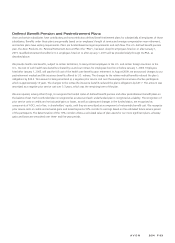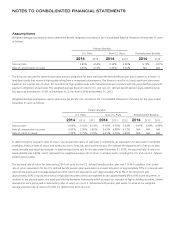Avon 2014 Annual Report Download - page 101
Download and view the complete annual report
Please find page 101 of the 2014 Avon annual report below. You can navigate through the pages in the report by either clicking on the pages listed below, or by using the keyword search tool below to find specific information within the annual report.
For the years ended December 31, 2014 and 2013, treasury lock agreements impacted AOCI as follows:
2014 2013
Net unamortized losses at beginning of year, net of taxes of $2.7 and $3.7 $(5.1) $(6.8)
Reclassification of net losses to earnings, net of taxes of $0.0 and $1.0 1.9 1.7
Net unamortized losses at end of year, net of taxes of $2.7 and $2.7 $(3.2) $(5.1)
Foreign Currency Risk
We use foreign exchange forward contracts to manage a portion of our foreign currency exchange rate exposures. At December 31, 2014,
we had outstanding foreign exchange forward contracts with notional amounts totaling approximately $173.9 for various currencies.
We use foreign exchange forward contracts to manage foreign currency exposure of certain intercompany loans. These contracts are not
designated as hedges. The change in fair value of these contracts is immediately recognized in earnings and substantially offsets the foreign
currency impact recognized in earnings relating to the associated intercompany loans. During 2014 and 2013, we recorded losses of $13.3
and $3.5, respectively, in other expense, net in the Consolidated Statements of Income related to these undesignated foreign exchange
forward contracts. Also during 2014 and 2013, we recorded gains of $14.7 and $4.8, respectively, related to the intercompany loans,
caused by changes in foreign currency exchange rates.
We also used a foreign exchange forward contract to hedge the foreign currency exposure related to the net assets of foreign subsidiaries,
which were effective as hedges. A gain of $4.3 for 2012 related to the effective portions of the foreign exchange forward contract was
included in foreign currency translation adjustments within AOCI. The foreign exchange forward contract was terminated in January 2012,
and therefore no gain or loss was recorded during 2014 or 2013.
Credit Risk of Financial Instruments
We attempt to minimize our credit exposure to counterparties by entering into derivative transactions and similar agreements with major
international financial institutions with “A” or higher credit ratings as issued by Standard & Poor’s Corporation. Our foreign currency and
interest rate derivatives are comprised of over-the-counter forward contracts, swaps or options with major international financial institutions.
Although our theoretical credit risk is the replacement cost at the then estimated fair value of these instruments, we believe that the risk of
incurring credit risk losses is remote and that such losses, if any, would not be material.
Non-performance of the counterparties on the balance of all the foreign exchange agreements would have resulted in a write-off of $.6 at
December 31, 2014. In addition, in the event of non-performance by such counterparties, we would be exposed to market risk on the
underlying items being hedged as a result of changes in foreign exchange rates.
NOTE 9. Fair Value
Assets and Liabilities Recorded at Fair Value
The fair value measurement provisions required by GAAP establish a fair value hierarchy, which prioritizes the inputs used in measuring fair
value into three broad levels as follows:
• Level 1 – Quoted prices in active markets for identical assets or liabilities.
• Level 2 – Inputs, other than the quoted prices in active markets, that are observable either directly or indirectly.
• Level 3 – Unobservable inputs based on our own assumptions.
A V O N 2014 F-27


